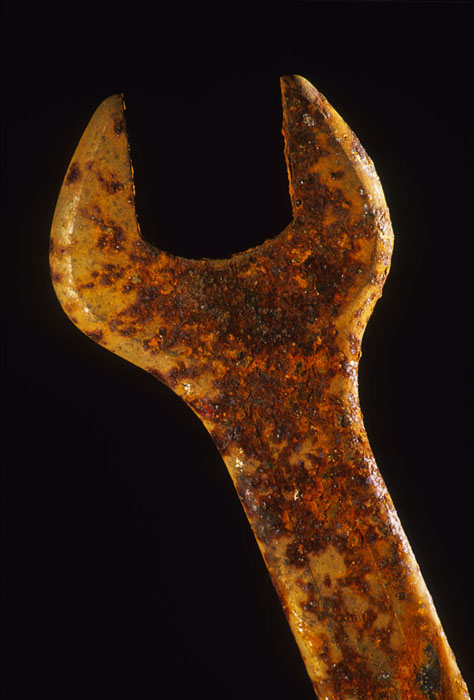Chemistry and Chemistry Experiment Stock Images
Buy Chemistry Framed Art and Posters
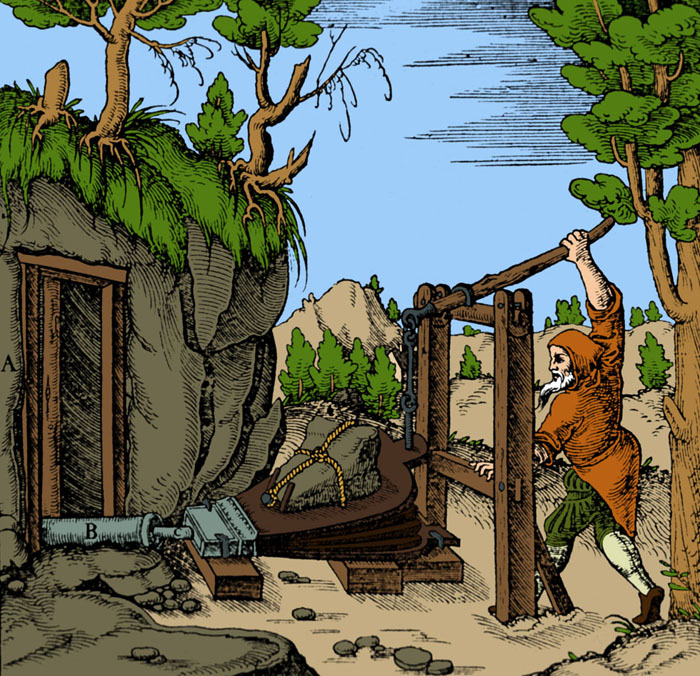
BX4691 - Color enhanced woodcut from Georgius Agricola's, De Re Metallica. Exterior scene showing man using bellows. A bellows is a device for delivering pressurized air in a controlled quantity to a controlled location. Georgius Agricola (1494-1555) was a German scholar and scientist. Known as "the father of mineralogy". He is best known for his book De Re Metallica, published in 1556, a treatise on mining and extractive metallurgy, illustrated with woodcuts illustrating processes to extract ores from the ground and metal from the ore, and the man uses of water mills in mining. Agricola described and illustrated how ore veins occur in and on the ground, making the work an early contribution to the developing science of geology. He described prospecting for ore veins and surveying in great detail, as well as washing the ores to collect the heavier valuable minerals, such as gold and tin. It was also an important chemistry text for the period and is significant in the history of chemistry. De re metallica is considered a classic document of Renaissance metallurgy, unsurpassed for two centuries.
© Science Source - science photos
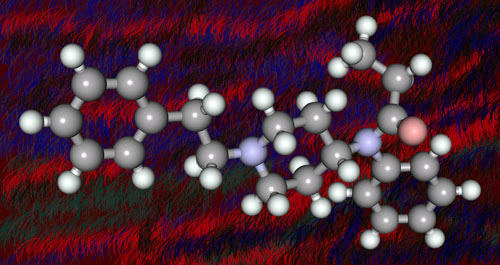
JE1857 - Molecular model of Fentanyl (also known as fentanil, brand names Sublimaze, Actiq, Durogesic, Duragesic, Fentora, Matrifen, Haldid, Onsolis, Instanyl, Abstral, Lazanda), a potent, synthetic opioid analgesic with a rapid onset and short duration of action. It is approximately 80 to 100 times more potent than morphine and roughly 40 to 50 times more potent than pharmaceutical grade (100% pure) heroin. Its abuse may lead to death. Chemical formula: C22H28N2O, molar mass: 336.471 g/mol. In the model shown, carbon atoms are grey, oxygen is red, nitrogen is blue and hydrogen is white.
© Science Source - science photos

BY9391 - Color-enhanced Scanning Electron Micrograph (SEM) of sodium nitrate.
© Science Source - science photos
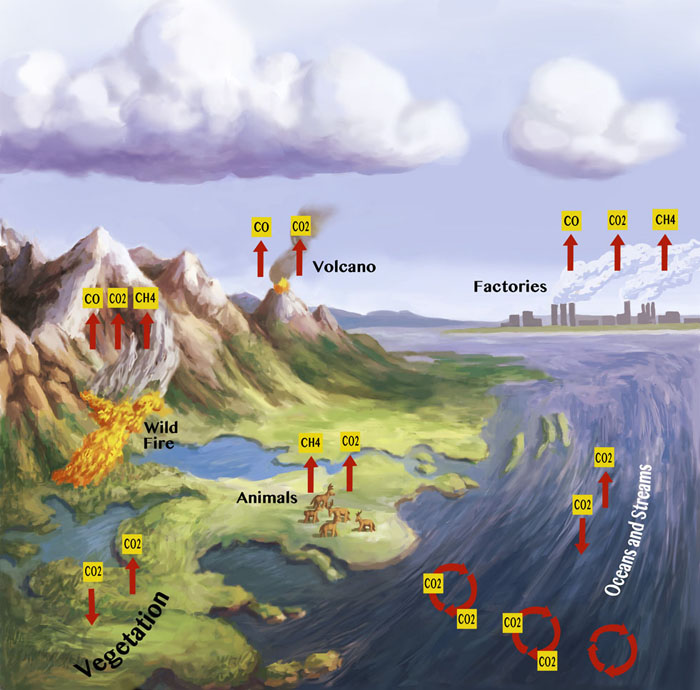
BX7459 - The carbon cycle describes the movement of carbon throughout the biosphere.
© Science Source - science photos
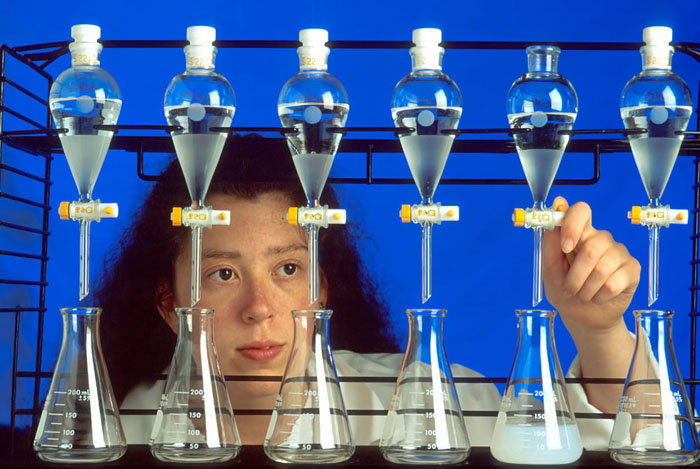
BV8770 - Laboratory technician extracts plant samples for total lipid and fatty acid composition analysis.
© Science Source - science photos
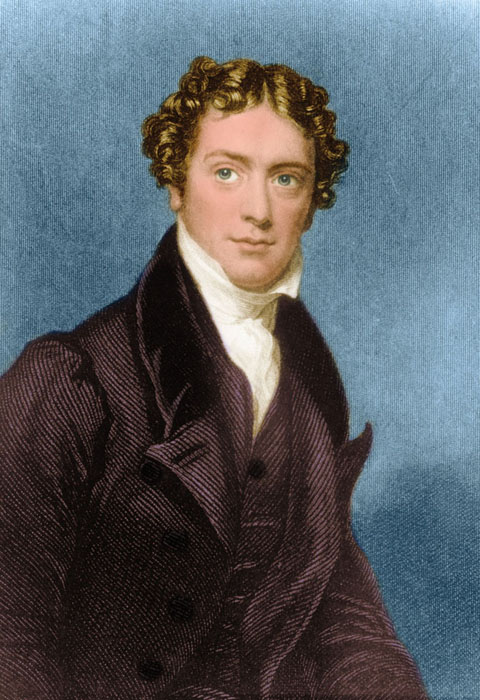
BY6800 - Michael Faraday (1791-1867), English chemist and physicist.
© Science Source - science photos

BK0906 - Marie Curie (1867-1934) was a Polish-French physicist and chemist famous for her research on radioactivity.
© Science Source - science photos
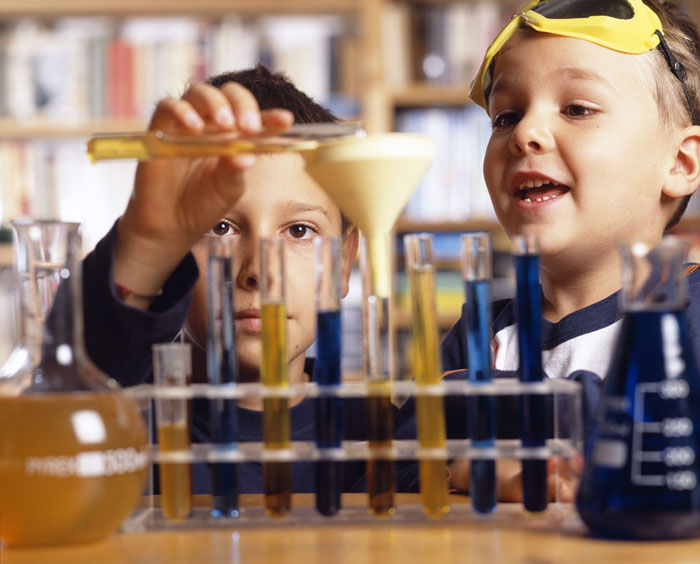
SC8480 - Chemistry lesson. Schoolboy pouring a liquid from one test tube into another.
© Science Source - science photos

BR7121 - The volume of snow is greater than the volume of the liquid water it forms when melted.
© Science Source - science photos

BY0800 - Digital illustration depicting a microscopic view of human DNA (PDB-1BNA).
© Science Source - science photos
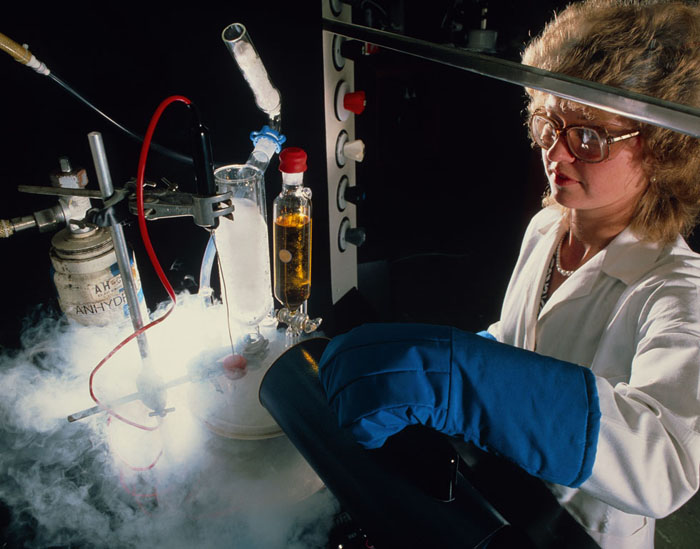
SD7612 - A chemist pouring liquid nitrogen around a reaction vessel during an experiment in low-temperature chemistry.
© Science Source - science photos
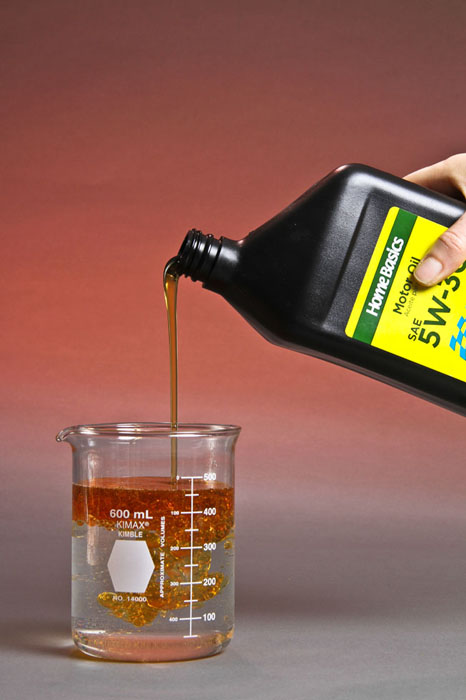
BV2604 - Motor oil is poured into a beaker of water to demonstrate its inability to dissolve into water.
© Science Source - science photos
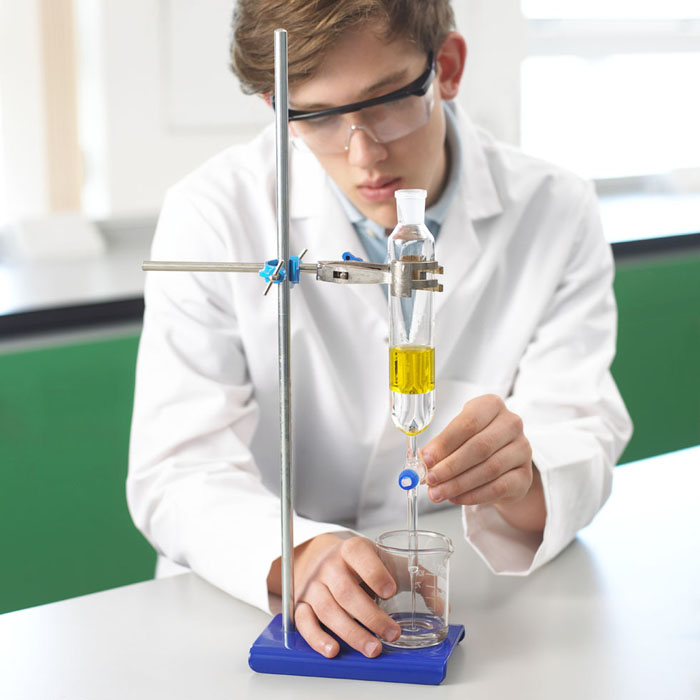
SR1178 - Student using a separating funnel to separate two liquids.
© Science Source - science photos
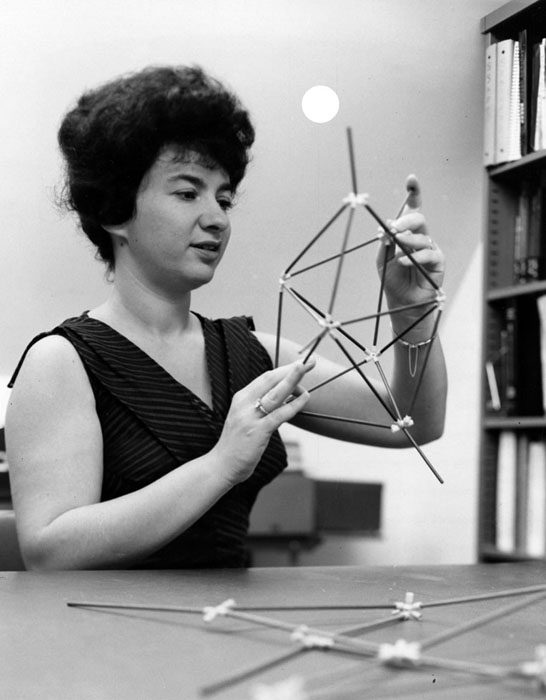
BW3379 - Kaufman photographed in 1964. Joyce Jacobson Kaufman (June 21, 1929) is a Jewish American chemist. At age eight she was chosen to attend a summer course at Johns Hopkins University for gifted children in math and science. In 1945, she was admitted as a special student to Johns Hopkins University, which did not grant women regular student status until 1970. She earned her B.S. with honors in Chemistry in 1949. She worked as a technical librarian and later a research chemist at the Army Chemical Center. In 1952 she returned to Johns Hopkins as a researcher in the physical chemistry lab. She received her M.A. in 1959 and her Ph.D. in physical chemistry in 1960. In 1972 she introduced the concept of conformational topology and applied it to biomedical molecules. Kaufman also published a landmark paper in 1980 in which she described a new theoretical method for coding and retrieving certain carcinogenic hydrocarbons. She was invited by NSF to use the Cray X-MP (1985) and YMP (1989) supercomputers at the San Diego Supercomputer Center.
© Science Source - science photos
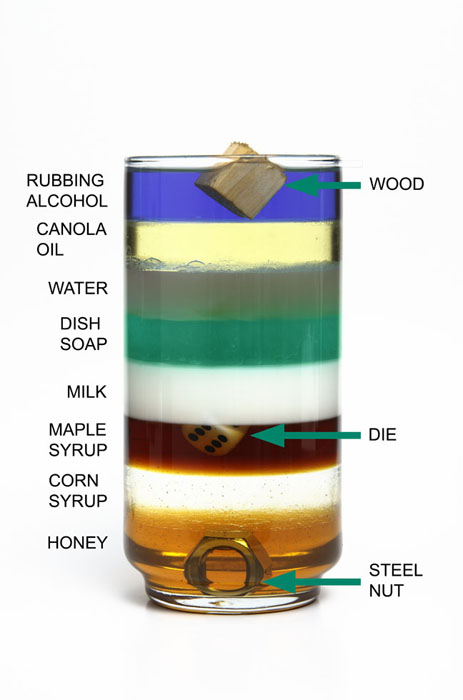
BX5834 - Glass containing several solids and liquids of different densities, on top of each other. They are arranged vertically according to their respective densities. From top to bottom (i.e., least to most dense): piece of wood, colored rubbing alcohol (isopropanol), Canola oil, colored fresh water, dish soap, milk, die; maple syrup, corn syrup, honey, steel nut.
© Science Source - science photos
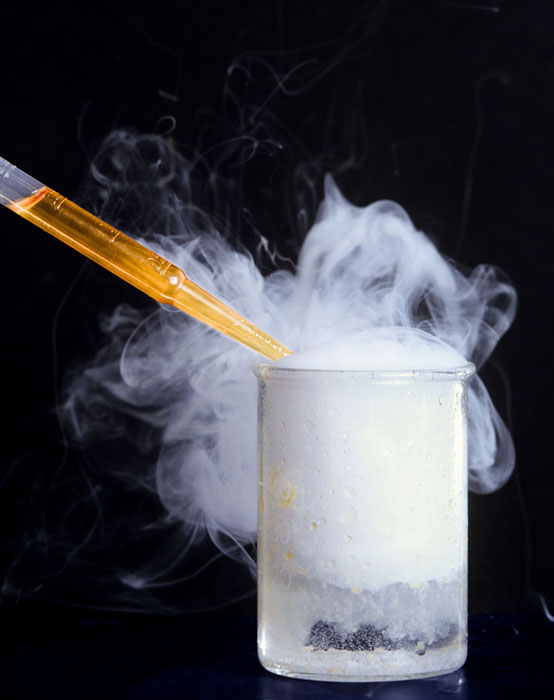
SR3809 - Amine-acid chloride reaction. Fumes of hydrogen chloride (HCl) are given off when an amine (orange liquid in pipette) reacts with an acid chloride (also known as an acyl chloride). The other product will be an amide. An amine is centered around a nitrogen atom, which in the amide has been combined with the carbonyl group from the acid chloride. This class of reactions is known as Schotten-Baumann reactions.
© Science Source - science photos


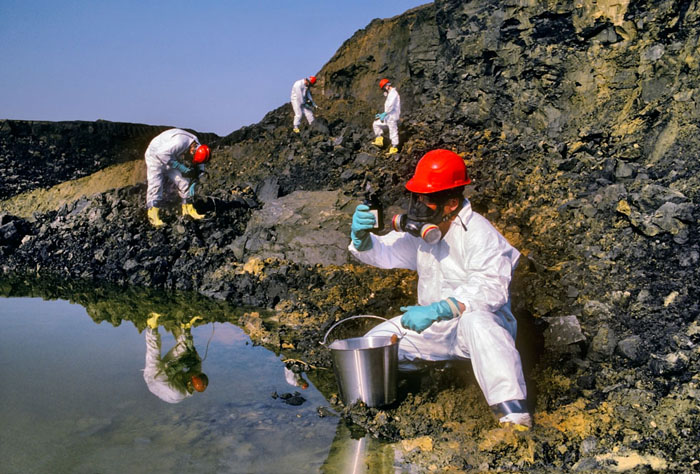








Discover chemistry stock images, perfect for educational materials, presentations, and publications. Our curated collection features high-quality photographs, illustrations, and video covering various chemical elements, reactions, laboratory equipment, and more. From molecular structures to chemical experiments, find the perfect image to illustrate your chemistry-related content. Explore our diverse selection today and elevate your scientific communication with clarity and precision.

